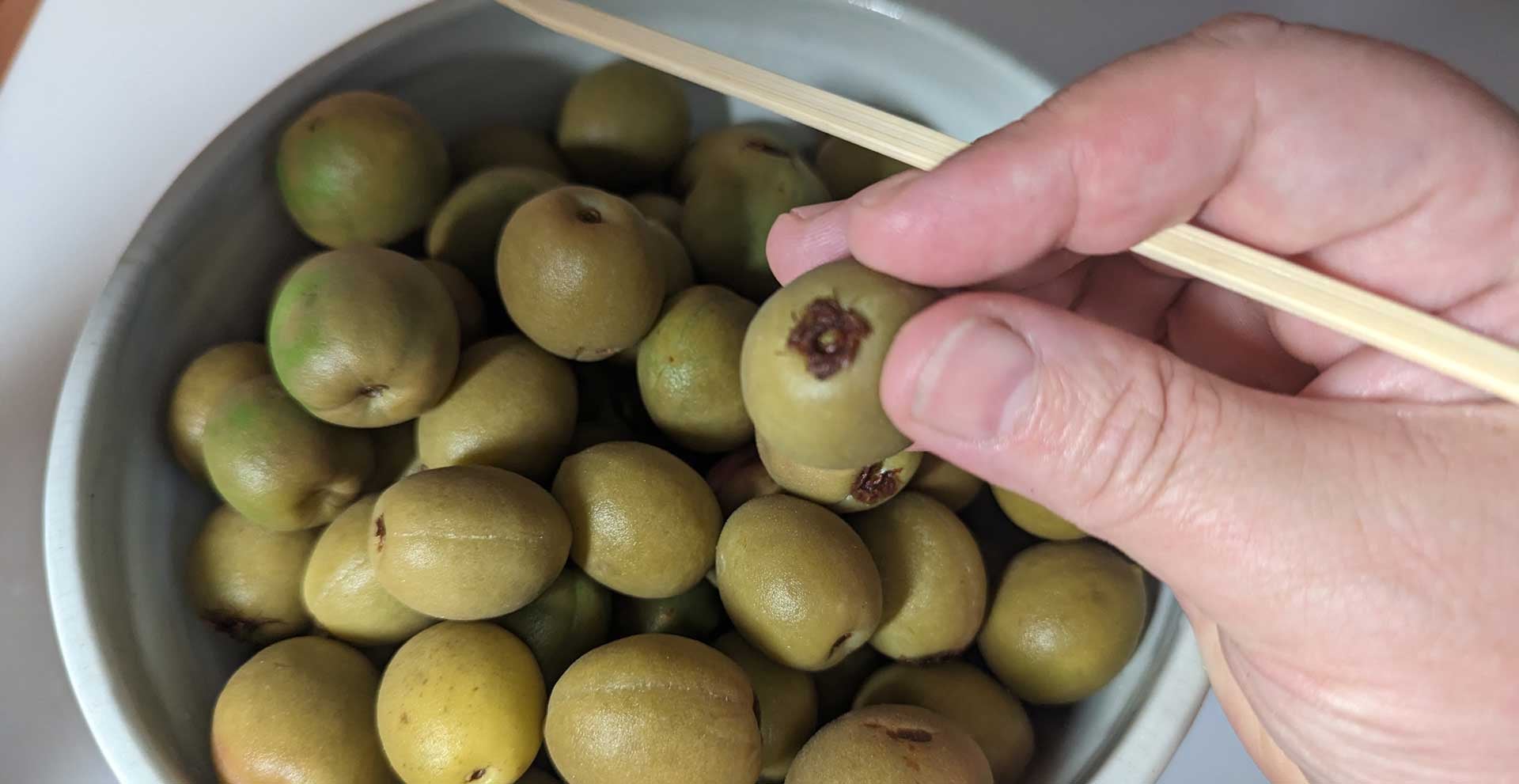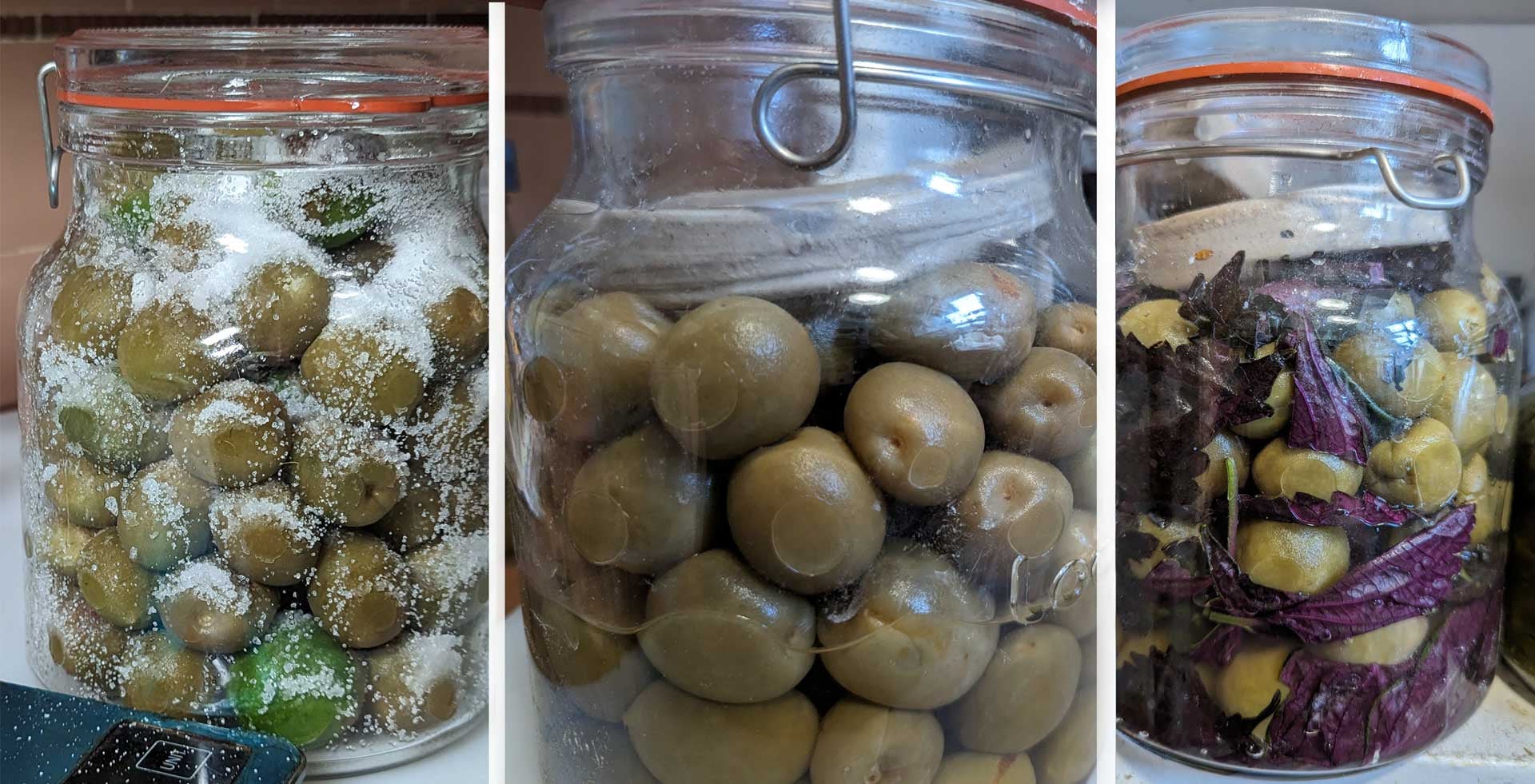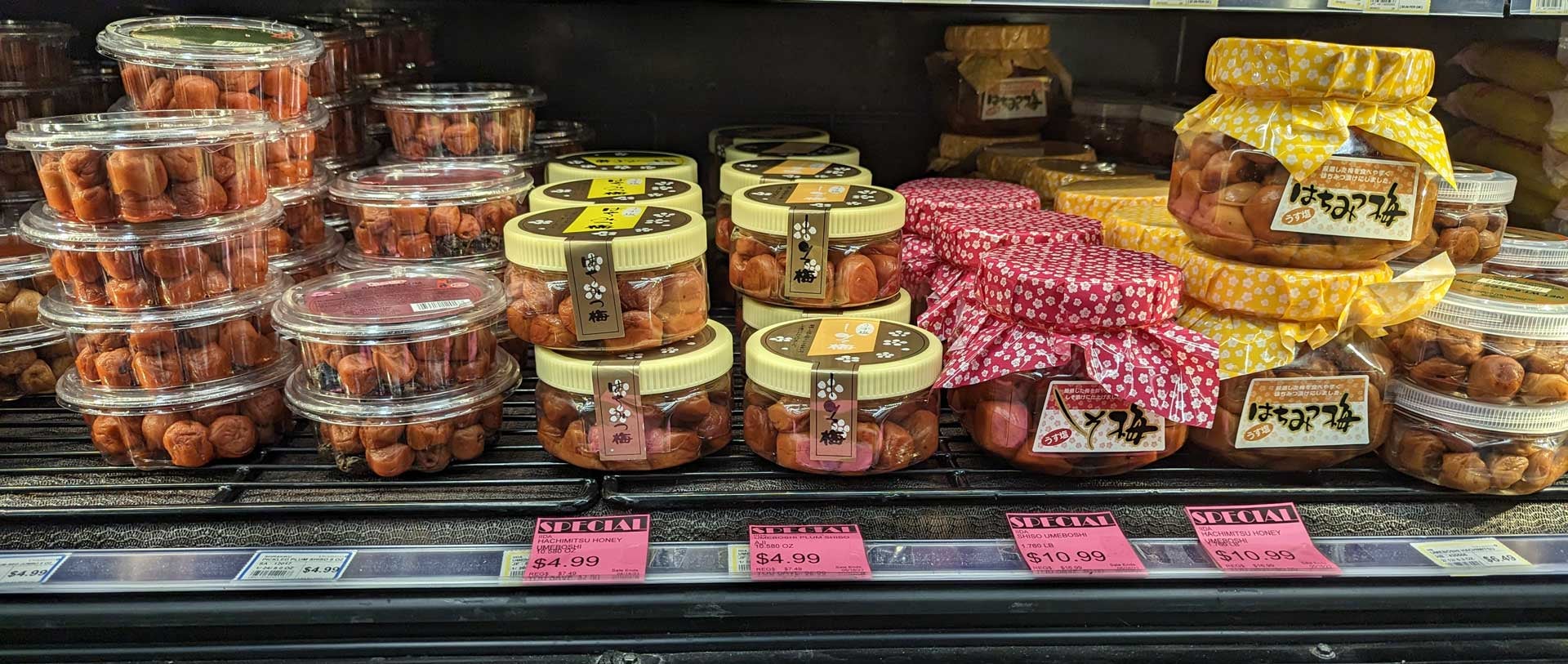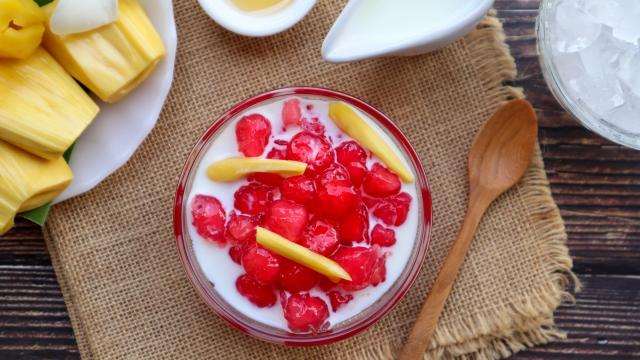There are two reasons to make umeboshi, the sour pickled plums that mellow out the longer you keep them. There’s the plums themselves, but you’ll also be rewarded with umeshu, a salty, plum-flavored violet liquor that you get as a byproduct of the process. I value them equally, and I’m going to explain two ways to make these treats: a traditional way for use in late spring, and an untraditional way you can use in the late summer/early fall.
I’ve been making umeboshi for years (the wrong way) so I went to Jane Hashimawari of Ippai, in Portland, Oregon — who I stalk online and occasionally foist extra vegetables upon — to learn the right way to make these irresistible sour treats. Jane’s early pandemic cook-alongs on Instagram, which were heavily flavored by her natural sense of humour, carried me through the first few months of lockdown, inspiring me to make Japanese-influenced meals I’d never before considered. Her main bag is Japanese comfort food pop-ups and catering, with an emphasis on using seasonal Northwest ingredients. Since I know she makes umeboshi legitimately, I asked about her process.
How did you learn to make umeboshi?
I actually did a lot of research reading old Japanese cookbooks, watching old YouTube videos of grandmas and asking my mum questions. She never really made umeboshi growing up, but her mum did, so she had some recollection. It seems like overkill for me to dig so deep but, you know, there’s always more than one way to do anything!
You post a lot about your mum, her garden of Japanese vegetables and fruits, and your memories with her. What is the significance of umeboshi to you?
I have such a core food-memory-cultural connection with umeboshi, I felt like I owed it to the ume to respect the process of making it myself if I have the means to. It was in our daily meals growing up, whether it be in an onigiri, accompanying a pickle plate with a meal, or as a seasoning element to a dish.
What’s your favourite thing to do with umeboshi?
I actually like to eat ume in different stages of softness. When it’s still kind of hard, we call it “kari kari ume,” and [it] has a nice, crunchy texture to it, but still has that nice “umeboshi” flavour. I like eating that with rice. I also like making an umeboshi mayo (roughly chop ume and mix with mayo), and eating it on a piece of grilled fish! But in general, umeboshi is just so great inside an onigiri wrapped in nori.
Jane Hashimwari’s umeboshi process
Ingredients:
- 1.4kg of ume plums (They usually can be found in early May by Asian grocers, call and ask.)
- 200g of non -iodized salt
- 4 cups of fresh red shiso leaves
- ½ cup of vodka
This process takes a few months, so you have to value patience. Jane soaks the plums in fresh water overnight, then uses a toothpick to pick the stem off the plums. This was very easy to do, and it only took a few minutes to get through them all.
The vessel you make the umeboshi in must be absolutely clean. Wash and dry it, swirl the vodka around the inside, then pour it out. This sanitizes the jar. Start layering in the plums into the crock. Do so in an orderly way; don’t just dump them in. Try to create layers, and between each layer, you’re going to sprinkle in some of that salt. You’ll need all the salt to be in the crock by the time you’re done, so metre it out as you go.
When you get to the top, you have to weigh down the plums, and there are many ways to do this. Obviously, there are pickling weights you can buy, but you can also put a brick or heavy can in a Ziploc bag and use that. In any case, you want to be sure you cover the top completely, regardless of what you use to put pressure on the plums.

Now you wait. Ume plums are available in early May, but the red shiso you need for the next part doesn’t grow in until late June, so until then, you get to watch the salt in the crock pull the liquid out of the plums, creating a liquor that covers them. Do not open the crock.
In June, when red shiso is ready to be picked, bring the leaves inside, massage them with more salt, and leave them out overnight, in a bowl, covered with a clean tea towel if you’re worried about dust. “This removes the impurities,” explains Jane.
The next day, place the contents of the crock in a clean bowl you’ve also sanitised with vodka. Layer in the shiso leaves, then a layer of ume plums, then more shiso, and so on, until you get to the top and all the shiso has been layered in between the plums. Now weigh it down again. Over the coming days, the liquor will be coloured by the red shiso and turn a glorious shade of purple. The shiso also imparts flavour.

The final step, once it’s really hot outside, is to dry the shiso and plums in the sun. You do this every day, on a drying mat, returning them to the crock in the evening. Do this for two to four days, and the plums will reach the desired texture, which is a little chewy, and a little dry, but still moist inside. Hashimawari called it “Soft, but not like a raisin!
Then you simply jar them back up, and leave them to age, the longer, the better.
How to make non-traditional umeboshi
I live in the Pacific Northwest, and as such, have an abundance of fruit trees around me. For many years, my next door neighbours graced us with a gigantic Italian plum tree that shed fruit forever. I would pluck green plums deep in summer to make my own version of umeboshi, knowing it was not the same as the real thing. Not surprisingly, it still produced really phenomenal pickles and plenty of the umeshu I love. I don’t know if Jane’s family would approve, but if you can’t get your hands on real ume plums, you might give this a try.
Ingredients:
- 1.4 kg of green, Italian plums. They should not have any red or purple to them, but a light blush is ok
- 200g of non-iodized salt
- 4 cups of fresh red shiso leaves
- ½ cup of vodka
Clean the plums as described above, and make sure they are free of stems and blemishes. Clean your crock in the same way, then give your plums a bath in the same vodka. Since these plums and the shiso are ready at the same time, we’ll layer them all in together. Add a layer of shiso, then plums, and then salt, then start over. Layer them to the brim, place a weight on top, then let it sit for a few weeks, until the plums are covered by the umeshu.
You can proceed with the drying process described above, then place them back in the jar, and let them age. I have found that second-year umeboshi made this way are just out of this world, but you can use the umeshu immediately.
How to use umeboshi and umeshu
My favourite hack is to flavour whipped cream with the umeshu. It’s salty and colourful and makes whipped cream taste special. Layered on a matcha sponge cake, it is luxurious in new, unique way. I also love an umeboshi sliced up on top of some soba noodles or ramen, or just some rice with furikake. Hashimawari makes onigiri with umeboshi every year that are quite popular.

The nice thing about umeboshi is that you really have to be patient, and just allow the process to happen. Some years, it goes awry and mould forms and you have to toss the whole thing. Other years are better for reasons I can’t nail down. In the end, you take part of a beautiful Japanese tradition that honours the plums and the shiso and, usually, end up with one tasty pickle.

Leave a Reply
You must be logged in to post a comment.